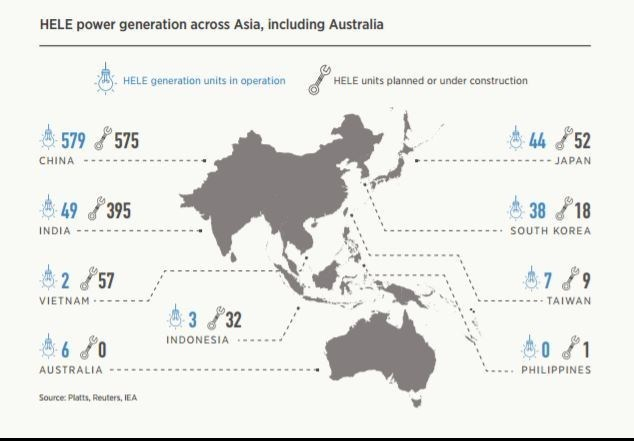The bottom line here is that misguided climate policy can and has increased poverty and hunger. There are better ways forward on liberal principles evolved since the Scottish Enlightenment – on which the US for one was founded. The rule of law (property rights, government integrity, judicial effectiveness), government size (government spending, tax burden, fiscal health), regulatory efficiency (business freedom, labor freedom, monetary freedom), open markets (trade freedom, investment freedom, financial freedom). In concert they provide guidelines for human progress that form the basis for progressive liberal democratic governance the world over.

“All the models apply a uniform carbon price, with the agricultural sector included
in the carbon-pricing scheme. Except for IMAGE, all the models assume land-use competition among food, bioenergy crops and afforestation.” Fujimori et al 2019: A multi-model assessment of food security implications of climate change mitigation
The most effective climate response does not require such an invidious compromise. The graphic below is sourced from the Heritage Foundation – a Washington think tank. Criteria important in social progress and economic growth are scored in countries around the world and the results rankled. It shows a tremendous decline in poverty over the last few decades. Something ardently to be desired.

Source” Heritage Foundation
‘Today, we live in the most prosperous time in human history. Poverty, sicknesses, and ignorance are receding throughout the world, due in large part to the advance of economic freedom. In 2021, the principles of economic freedom that have fueled this monumental progress are once again measured in the Index of Economic Freedom.
“To build a better world, we must have the courage to make a new start. We must clear away the obstacles with which human folly has recently encumbered our path and release the creative energy of individuals. We must create conditions favourable to progress rather than “planning progress.”… The guiding principle in any attempt to create a world of free men must be this: a policy of freedom for the individual is the only truly progressive policy.”
— Friedrich A. Hayek
The reality of the Paris climate accord is a 3 billion metric ton increase in electricity and heat greenhouse gas emissions per year by 2030. A sector responsible for just 25% of global greenhouse gas emissions. Energy choices for much of the world are those that provide the most productive path to development. At this time the choice is natural gas or high efficiency low emission coal technology The former emit some 50% and the latter some 10% less carbon dioxide than the coal plants formerly deployed – and negligible amount of sulfur, nitrous oxides, mercury or sulphur and black carbon particulates. There are many HELE plants being built or planned across Asia and Africa.

Source: ASEAN Energy Equation
The bulk of greenhouse gas emissions come from land use changes and farming or in the form of nitrous oxides from internal combustion engines and nitrogen fertilizers and methane from many sources. As well there is the inexplicably neglected strong warming from black carbon. Or now unnecessary CFC use. These are controlled with existing technology available to technologically advanced economies. With immense health and environmental benefits.
Deserts are being reclaimed. Forests, grasslands, wetlands and coastlines conserved and restored. The key is water. The African NGO Excellent Development has a goal of a million sand dams for half a billion people by 2040. A cost effective way to transform a continent. And sequester immense amounts of carbon dioxide.
Food security requires doubling of food production – and much more meat – by 2050. It can only be done by building living, more fertile soils – returning lost carbon in the process. This soil carbon store can be renewed by restoring land. Holding back water in sand dams, terraces and swales, replanting, changing grazing management, encouraging perennial vegetation cover, precise applications of chemicals and adoption of other management practices that create positive carbon and nutrient budgets and optimal soil temperature and moisture. Atmospheric carbon is transferred from the atmosphere to soil carbon stores through plant photosynthesis and subsequent formation of secondary carbonates. It is based on sound soil science and modern farming practices.
Carbon sequestration in soils has major benefits in addition to offsetting anthropogenic emissions from fossil fuel combustion, land use conversion, soil cultivation, continuous grazing and cement and steel manufacturing. Restoring soil carbon stores increases agronomic productivity and enhances global food security. Increasing the soil organic content enhances water holding capacity and creates a more drought tolerant agriculture – with less downstream flooding. There is a critical level of soil carbon that is essential to maximising the effectiveness of water and nutrient inputs. Global food security, especially for countries with fragile soils and harsh climate such as in sub-Saharan Africa and South Asia, cannot be achieved without improving soil quality through an increase in soil organic content. Wildlife flourishes on restored grazing land helping to halt biodiversity loss. Reversing soil carbon loss is a new green revolution where conventional agriculture is hitting a productivity barrier with exhausted soils and increasingly expensive inputs.
Increased agricultural productivity, increased downstream processing and access to markets build local economies and global wealth. Economic growth provides resources for solving problems – conserving and restoring ecosystems, better sanitation and safer water, better health and education, updating the diesel fleet and other productive assets to emit less black carbon and reduce the health and environmental impacts, developing better and cheaper ways of producing electricity, replacing cooking with wood and dung with better ways of preparing food thus avoiding respiratory disease and again reducing black carbon emissions. A global program of agricultural soils restoration is a foundation for balancing the human ecology.

Euan has a post up about land use changes that you may find of interest-
http://euanmearns.com/grazing-desertification-and-climate-change/